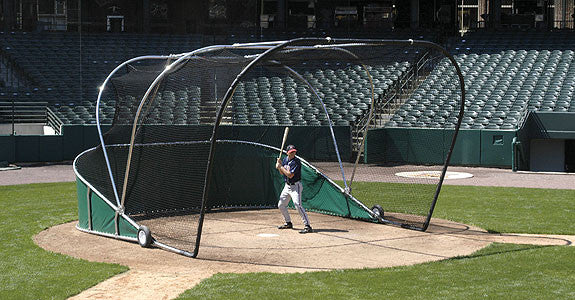Rapid Fire Ground Balls
This is a great way to end your traditional infielders’ positional work during practice. At the conclusion of your normal ground ball work at each position (third to first, short to first, second to first, 6-4-3 double play, 5-4-3 double play, 3-6-3 double play, etc.) have your infielders all gather at their respective positions and prepare them for rapid fire ground balls.
For example, your third baseman will be at his or her usual spot while the coach is hitting a fresh ground ball the split second he/she throws the ball across the diamond. This will make the fielder have a constant head on their shoulders and be prepared for whatever may come next (a ball hit to their left, hit to their right, a slow roller, a high chopper, etc.).
Since the ground balls are coming at a non-traditional rate, this will create a fun and competitive environment for your team and coaches. You’re also likely get some players that begin diving at balls and getting dirty, which will certainly get a rise from their teammates. Just make sure they’re still utilizing proper footwork and mechanics, as this drill can become a little bit chaotic.
This take time and work to get players to learn how but it is a great drill and will pay off with ball handling in the game.
CREDIT TO: thehittingvault.com
Bucket Drill
by Randy Huff
(Darien, CT)
Coach sits on a bucket behind pitchers mound (Honey Hole). He will roll slow rollers to either SS or 2nd base.
The drill is designed to have the middle infielders roll a double play, with each player doing a little hop after they throw the ball to first base, signifying a runner sliding into them.
The coach gets to watch how the play unfolds, like watching how the fielders field the ball, flip or throw to 2nd base and watching the small hop after the ball is released.
The coach can have a lot of fun with the drill by putting the middle infielders on a stop watch to see who can do it the fastest, kids love the drill.
Then move bucket and coach by home plate and have players go to 3rd base. Have a coach on 3rd base as a runner.
Roll ball to the players at 3rd base, make sure they look the runner back before firing ball to 1st base. Then make sure 1st baseman catches ball for out and pops off base to look at home for the play.
If the player forgets to look coach back, have coach score from 3rd. This is all explained with less than 2 outs of course.
When no one around, improve by yourself, one man drills
Whether you're throwing out base runners from the confines of Fenway Park or turning a 6-4-3 double play on a local Little League field, throwing is one of the most important, and physically demanding, aspects of baseball
Just as major leaguers can get a dead arm during spring training, younger players also risk injury as they begin throwing regimens in the spring. The Seven Ball Drill below is a great way to increase arm strength and prepare players for the various throws they will make during the season.
Note: Perform the drill's seven separate steps in sequence to ensure proper arm development.
Baseball Arm Strength Drill
Stand shoulder- width apart, with throwing arm placed upwards at a 90- degree angle. While holding elbow with glove, throw ball to partner using just the wrist.
Sit with legs spread and arm in same position as exercise above. This time use the area from the elbow up to throw ball to partner.
Remain sitting and throw ball by rotating hips and turning upper torso. (Focusing on follow- through is not necessary.) Use the glove arm or elbow to direct throw.
Go to one knee. Throw ball by rotating hips and turning upper torso, as in above exercise. This time emphasize follow- through across the raised knee.
Stand with glove arm closest to partner, and feet shoulder- width apart. Repeat the above steps, concentrating on follow- through. This time throw without moving your feet.
Use all the steps above, this time add a crow hop and throw ball to partner. (Crow Hop: A technique in which you hop forward on your front foot during the wind up of your throw.)
Long toss is the last step. Stand approximately 10 feet apart and toss the ball to partner as quickly as you can for one minute. You can even keep track of the number of catches to turn this into a competition. Emphasize a quick release and concentrate on the ball entering and leaving the glove. Note: For infielders, you can turn this last step into a quick toss by reducing the distance.
By following the steps above, players will find it easier to make all the necessary throws in a game, as well as keep their arm healthy throughout an entire season. A good goal to have, no matter the league, when opening day rolls around.
Baseball Fly Ball Exercise
A dynamic drill used for both infielders and outfielders to work on their jumps and reactions while accelerating to fly balls. The fielder starts from the pre-pitch position. He then uses a quick drop step to open his hips. This creates a direct line toward the ball. A line is formed with 3-4 players. The coach will stand approximately 10 feet in front of players with a ball in his hand. The first player faces the coach and on a command, breaks on the run at a 45 degree angle while looking back at the coach. The coach will then throw a ball slightly ahead of the player which leads to a running catch. After the play, the player returns to the end of the line. The next player in line repeats the drill. This drill can be done to the left, to the right, and straight over the head.
Key Teaching Points
Drop step
The first move for an infielder reacting to a fly ball is a quick drop step. This helps create a direct line to the ball. When the ball is hit directly over your head, it is best to drop step to your glove side, which gives you a little longer reach when catching a ball.
Acceleration
Have the player make his first 2-3 steps as quickly as possible and accelerate to the ball. Remind players to run on the balls of their feet. Pre-Pitch Set Up: Both infielders and outfielders always begin each drill from the proper pre-pitch set up. This means a good athletic position, knees flexed, hands in front of chest, and eyes on the ball.
Below is a stock answer for concentration and pitch recognition along with being confident at the plate.
Try it and I believe that the player will start to hit and catch better.
For catching take way his glove and play catch with a foam ball or plastic ball then get a baseball and do the
drill I talk about below. We have to get over any fear and use to the ball. Believe it or not when they first
start the glove just gets in the way so eliminate it most of the time.
As simple as this sound get a piece of plywood, prop it up at and angle, have him or us throw the ball up the
board and then field it as it rolls back down.
The for fly balls or high throws, throw the ball onto a roof and catch it as it comes off, it is fun and teaches
throwing and eye hand coordination. Use a rubber ball or tennis ball gives a safer aspect to it if you so
desire.
Coach Arnald Swift
Hitting (Hitting off a Tee)
Favorite part of practice is batting practice, where they get to see how hard and far they can hit a baseball. The problem with batting practice is how kids handle it. A lot of kids see batting practice as a homerun derby with the ball perfectly placed each time (or waiting for a perfectly placed one) and swinging for the fences. When you hit off a Tee, your goals can be made more appropriate for trying to become a better hitter and can be made more realistic to game situations when done correctly. The goal of hitting the ball off the tee is to try and square up the ball as much as possible because almost all results will be the same anyways. Hitting off a tee allows you to forget about your surroundings and concentrating on increasing your strength and using proper technique. Placing the Tee in different locations that represent where an actual ball may be pitched to you - raise and lower the Tee, place it closer to you and further away - can help you learn what adjustments your body will need to make to square up on a ball based on the pitch location.
Ground balls (Using a Wall)
Taking ground balls seems like it would be at least a two person activity but it doesn’t need to be. If you’re in a position where you can only practice by yourself, try throwing yourself groundballs off the wall (among other ideas). You don’t need to have a hard ball to practice this. If you have any type of ball that bounces you can work on almost all the skills involved with picking up a ground ball. You can still learn to read different types of hops while regulating your speed to the ball allowing your body to be in a good fielding position. The best part of throwing a ball off the wall is you can adjust every throw to cater to your defensive needs. The only thing you can’t really simulate is being able to read a ball off the bat, but learning how to get your body in a good fielding position will ultimately help you with that as well.
Pop ups (Using a Tennis Racket)
This is a little easier with a partner, but catching pop ups generally requires a coach that’s capable of hitting pop flies to their target and this can be very difficult for inexperienced coaches and an inefficient use of time. It can make pop ups a lot easier if you try it with a tennis ball and racket. Using a tennis racket and hitting the ball up in the air is a great way to consistently hit pop ups at your target. Along with being able to hit them extremely high and accurate, the tennis ball will be influenced by the wind making it a challenge for the person receiving them. This drill works great for catchers pop ups.
All of these drills will help you practice your skills on your own and are just a few examples of many ways you can work on your own. When trying to become a better athlete, all of your most important work will get done on your own so don't wait for a team practice or a bunch of teammates to get together. Try and find different ways that you can become great at practicing baseball without relying on anyone else.
I'd love to hear about your favorite "solo" drills. Please feel free to share them in the comments below so others can benefit from them.
Kevin Hussey










